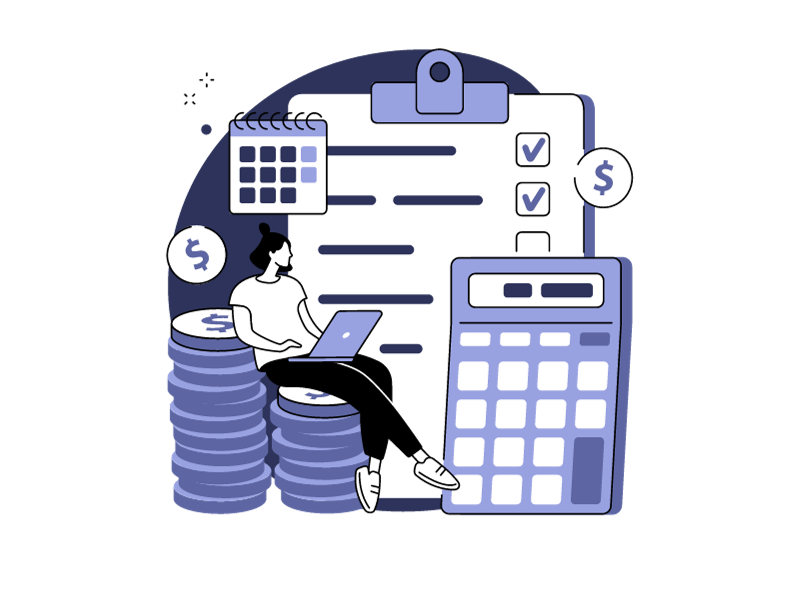

Retention rate is a key indicator in business and ecommerce, and measures a company’s ability to retain customers over a given period. Retention rate can also be used to calculate the percentage of employees you retain, i.e., employee retention, and therefore internal loyalty. In the case of customer retention, simply put, it’s the percentage of customers who continue to use services over a given period. A high retention rate means that customers are satisfied with the company’s products or services and choose to continue buying from it. This helps build a loyal customer base that contributes to regular, stable revenues. Acquiring new customers is generally more expensive than keeping existing ones. The costs of marketing, advertising, and acquiring new customers can be high. By maintaining a good retention rate, a company can reduce its expenses. Loyal, satisfied customers are more likely to recommend the company to others, which can enhance the company’s reputation and attract new customers through word of mouth. With our retention rate calculator, you can ensure that your retention rate is optimal in just a few clicks.
CALCULATE CUSTOMER RETENTION RATE
By building customer loyalty, you not only stabilize your revenue, but you also maximize the long-term value of each customer. When customers remain loyal, they’re more likely to make repeat purchases. They’re also more likely to recommend the company to others.
A good retention rate indicates that customers are satisfied with the products or services offered, as well as with the overall customer experience. It also reduces the costs associated with acquiring new customers, which are often much higher than those of retaining existing ones. What’s more, loyal customers are more inclined to try out new products or services, making it easier to bring new offers to market.
Some key moments when it’s relevant to calculate this rate:
- Periodically: a monthly, quarterly, or annual assessment enables you to monitor trends and identify seasonal variations or the effects of marketing campaigns.
- Following events: after a promotional campaign, a product launch or a sales period, it is relevant to check whether these events have attracted repeat customers or only occasional buyers.
- In response to performance indicators: if important KPIs such as sales or customer satisfaction are showing signs of decline, calculating the retention rate can help diagnose the problem.
| 👥 Initial customers | Number of customers at the start of the period |
| 👥 Final customers | Total number of customers at the end of the period |
| 📣 New customers | Number of new customers acquired during the period |
| 📈 Retention rate (%) | Percentage of initial customers who stayed until the end of the period |
HOW DO YOU CALCULATE CUSTOMER RETENTION RATE?
Beforehand, determine the period you wish to analyze. Add the number of customers at the start of the period, then the total number of customers at the end of the period. Finally, add the number of new customers acquired during the period. Click “Calculate customer retention rate” and let the tool give you the retention rate as a percentage.


OUR TIPS FOR OPTIMIZING CUSTOMER RETENTION RATE
Optimizing retention rate will play a key role in the growth of the entire company. Here are some practical tips on how to achieve this:
- Understand your users
Getting to know your users is at the heart of all business activity. Use analytics to track their behaviors, preferences and needs. Conduct surveys, polls, and interviews to gather direct feedback. The more you understand what motivates your users, the better you can meet their expectations!
- Offer exceptional customer service
Good customer service makes all the difference! Make sure that your support team is easily accessible, responsive, and empathetic. To optimize your customer lifetime value, you need to offer fast, effective solutions to the problems encountered by your users.
- Personalize the user experience
Personalization boosts engagement, so use the data you collect to share content, recommendations, and offers tailored to each user. A tailored experience keeps them coming back for more!
- Create quality content
Quality content attracts and retains users, so don’t hesitate to offer blog posts, videos, tutorials, or newsletters involving your brand and products so that every purchase is motivated by various elements that reassure your customers. And above all, make sure that your content addresses your audience’s questions and needs.
- Use loyalty programs
Loyalty programs reward users for their commitment. Offer points, discounts, or exclusive benefits to loyal users, as this encourages them to stay and interact more with your brand.
CUSTOMER RETENTION RATE FAQ
What is retention?
Retention refers to the action of keeping or preserving something over an extended period of time. In a business context, it can refer to the ability to maintain customers over the long term.
How do you calculate retention capacity?
First, choose a period (e.g., one year) and count the number of customers at the start of the period. Next, count the number of customers remaining at the end of the period. You divide the remaining customer count by the number of customers at the beginning of the period, then multiply by 100.
How to calculate churn rate, the opposite of retention?
To calculate churn rate—the rate of customers lost over a given period—divide the number of customers lost during a period by the number of customers at the start of that period. Then multiply the result by 100 to obtain a percentage. For example, if a company starts with 500 customers and loses 50, the churn rate is 10%.
Create your online store with Wizishop
Access, browse and test all of our features with our 7-day trial, no strings attached





